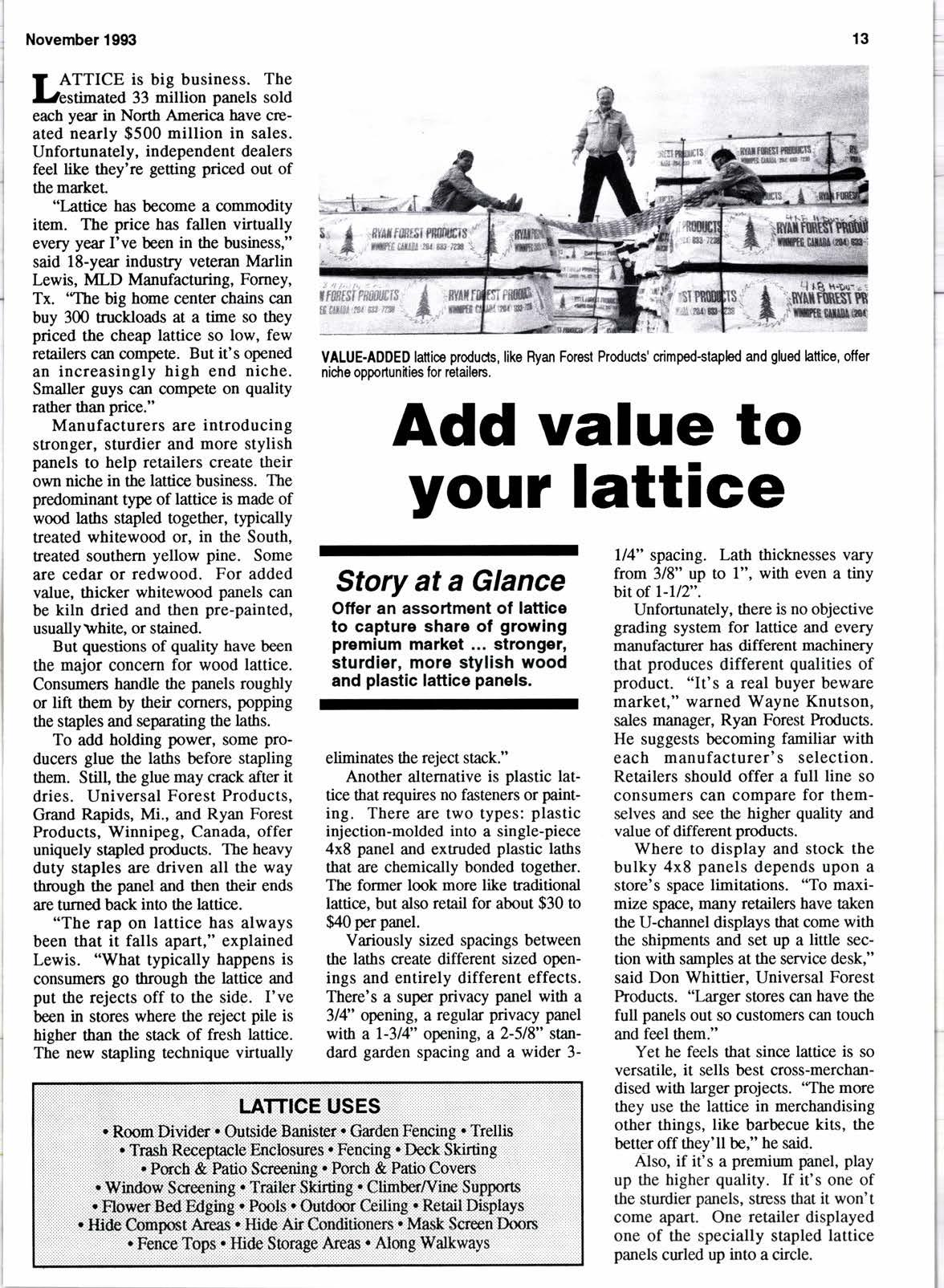
3 minute read
Gaulks & Sealants
mone uses = more sales
fT'S common lnowledge that a little caulk in the right Iplaces can help shield a home against moisture damage and add to its energy efficiency. But even savvy homeowners may not realized how many uses there are for household caulks and sealants. Become familiar with the products' many uses and you'll be able to suggest them to aid in more repair and remodeling situations.
According to the Rohm and Haas Paint Quality Institute, there are four broad categories of caulk projects around the home:
INTERIOR'T'INISHING''
Painting confactors know that caulk is a great substitute for drywall compound or spackling when sealing cracks and holes in sheetrock and plaster. Not only is caulk easier to use than either of those products, but it can cut surface preparation time in half since it eliminates the seal gaps between ceramic tile and wallboard, as grout replacement and as a sealant where toilets meet the floor.
Exterior Sealing
Caulk products can be applied to both sides of exterior walls. Here, they help seal out moisture and outside air while keeping costly heat and air conditioning indoors.
Common applications include the use of caulk to seal interior and exterior window and door perimeters, and to close gaps around electrical outlets. Certain caulks can even be used to glaze glass to frames on the inside and outside of doors, windows and skylights.
Other places that caulk can be used for exterior sealing include:
O where wood panels meet window and door franes, especially where the vertical frarnes contact the sill plates.
O where siding abuts window and door trim, masonry or brick walls.
O where wood, vinyl or aluminum siding fonns corner joints.
O around vent ducts, air conditioning units and openings for plumbing, wiring or cable.
Miscellaneous Crack Filling
Caulk can also be used to ffl all sorts of cracks in and around the house:
O in many roofing applications, such as sealing around flashing, lap joints, guner joinrs and vent pipes.
O to seal cracks and joints in foundations, driveways, patios, sidewalks and decks.
O to nU gaps and cracks in other masonry surfaces. A sales staff s ability to share the many uses of quality caulks is the first step towards boosting overall caulk sales.
Story at a Glance
Caulks and sealants' varied applications provide increased sales opportunities four major use categories. need for sanding.
Moreover, in virtually any room, cautk can be used to fill gaps or joints in and around mitered joints, baseboards, chair rails or crown moulding to improve the appearance of woodwork.
If a quality siliconized acrylic or water-based acrylic caulk is used for an interior finishing project" the surface can be painted within 30 to 60 minutes if a top quality paint is used, or after lZ hours when an economy-grade paint is applied.
Kitcimnandbath
Qualiry caulk products can be used to form a watertight seal in many areas within kitchens and baths, while creating an attractive appearance. Comnon kitchen uses are behind splash boards and where sinks meet the countertop.
In baths, caulks are used around sinks, shower stalls and bath tubs. They also can be used to f ATTICE is big business. The lJestimated 33 million panels sold each year in North America have created nearly $500 million in sales. Unfortunately, independent dealers feel like they're gecing priced out of the market
"l,attice has become a commodity item. The price has fallen virtually every year I've been in the business," said l8-year industry veteran Marlin Lewis, MLD Manufacturing, Forney, Tx. '"The big home cent€r chains can buy 300 truckloads at a time so they priced the cheap lattice so low, few retqilels can oompete. But it's opened an increasingly high end niche. Smaller guys can compete on quality rather than price."

Manufacturers afe introducing stronger, sturdier and more stylish panels to help retailers create their own niche in the lanice business. The predominant type of lattice is made of wood laths stapled together, typically treated whitewood or, in the south, treated southern yellow pine. Some are cedar or redwood. For added value, thicker whitewood panels can be kiln dried and then pre-painted, usually vhite, or stained.
But questions of quality have been the major concern for wood lattice. Consumers handle the panels roughly or lift them by their oorners, popping the saples and separating the laths.
To add holding powff, some producers glue the laths before stapling tlem. Still, the glue may crack after it dries. Universal Forest Products, Grand Rapids, Mi., and Ryan Forest Products, Winnipeg, Canada, offer uniquely stapled products. The heavy duty staples are driven all the way through the panel and then their ends are turned back into the lattice.
"The rap on lattice has always been that it falls apart," explained Lewis. "What typically happens is consume$ go througb the lattice and put the rejects off to the side. I've been in stores where the reject pile is higher tban the stack of fresh lattice. The new stapling technique virtually










